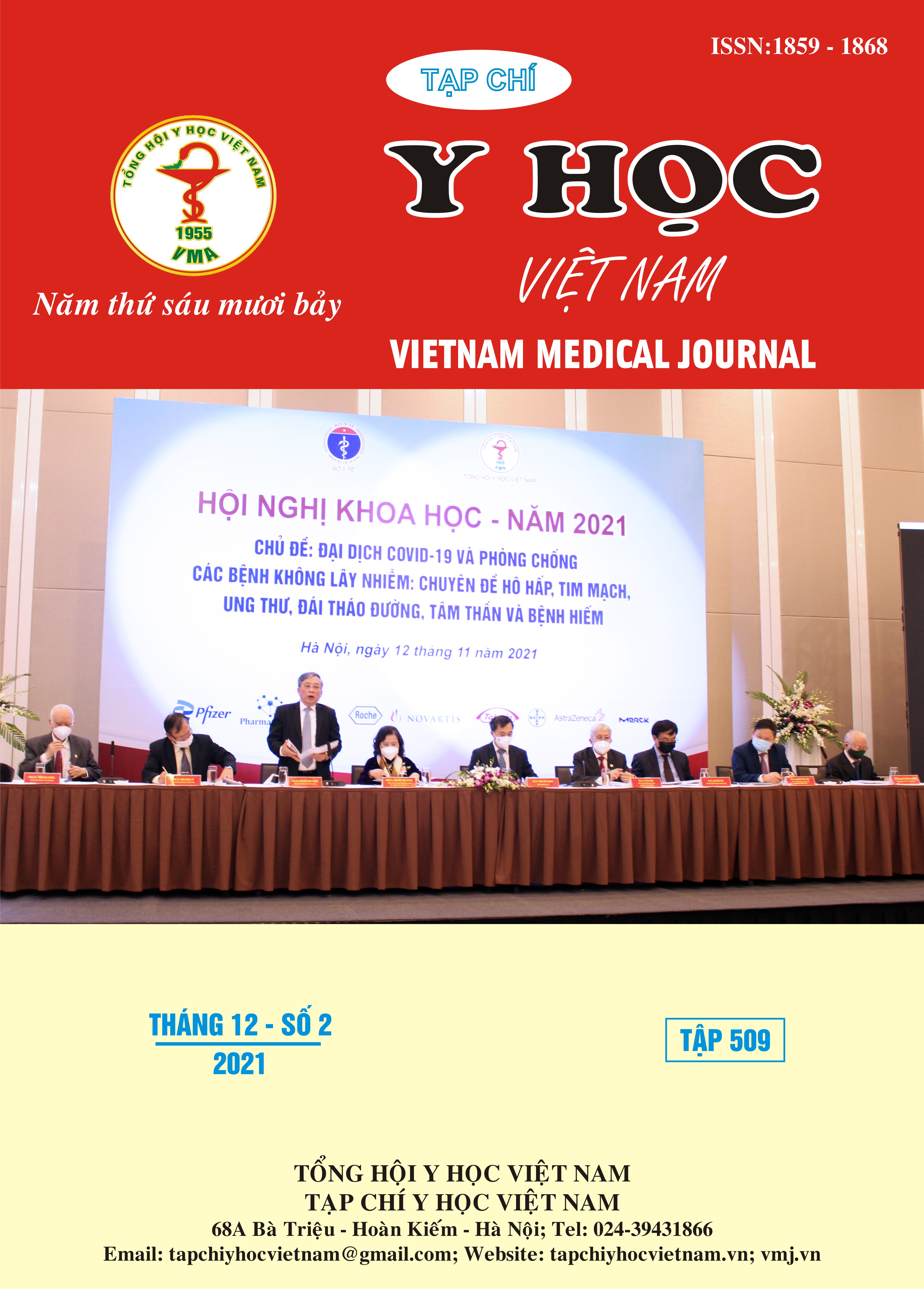CLINICAL AND CEPHALOMETRIC X RAY CHARACTERISTICS OF CLASS II PATIENTS TREATING WITH TWICARE FUNCTIONAL APPLIANCE
Main Article Content
Abstract
Objective: to analyze clinical features and Cephalometrics analysis of class II malocclusion in growing patients treated by Twicare appliance. Method: a cross-sectional descriptive study. Results: nasolabial angle lower than normal analysis 41.2%; deepbite 70.59%; both sides class II dental 82,4%; large overjet and overbite (7.32±2.14 và 4.32±1.89); normal maxillary (SNA = 83.06±2.84°) and mandibular retrognathia (SNB = 76.29±2.64°). Conclusion: Clinical and radiographic characteristics showed that patients with class II malocclusion treated by Twicare functional appliance have large overjet and overbite, and normal maxillary and mandibular retrusion.
Article Details
Keywords
Mandibular retrusion, class II malocclusion, Twicare functional appliance, growing patient
References
2. McNamara J.A., Jr. (1981), Components of class II malocclusion in children 8-10 years of age. Angle Orthod. 51(3), 177-202.
3. Medventiv (2015), Prospective multicentric, open-label, randomized Study assessing the efficacy of the removable and adjustable preformed Twicare® appliance versus removable Herbst treatment in class II malocclusion.
4. Sidlauskas A. (2005), The effects of the Twin-block appliance treatment on the skeletal and dentolaveolar changes in Class II Division 1 malocclusion. Medicina (Kaunas). 41(5), 392-400.
5. Khoja A., Fida M. and Shaikh A. (2016), Cephalometric evaluation of the effects of the Twin Block appliance in subjects with Class II, Division 1 malocclusion amongst different cervical vertebral maturation stages. Dental press journal of orthodontics. 2173-84.
6. Moyers R.E., Riolo M.L., Guire K.E., et al. (1980), Differential diagnosis of Class II malocclusions: Part 1. Facial types associated with Class II malocclusions. American journal of orthodontics. 78(5), 477-494.


